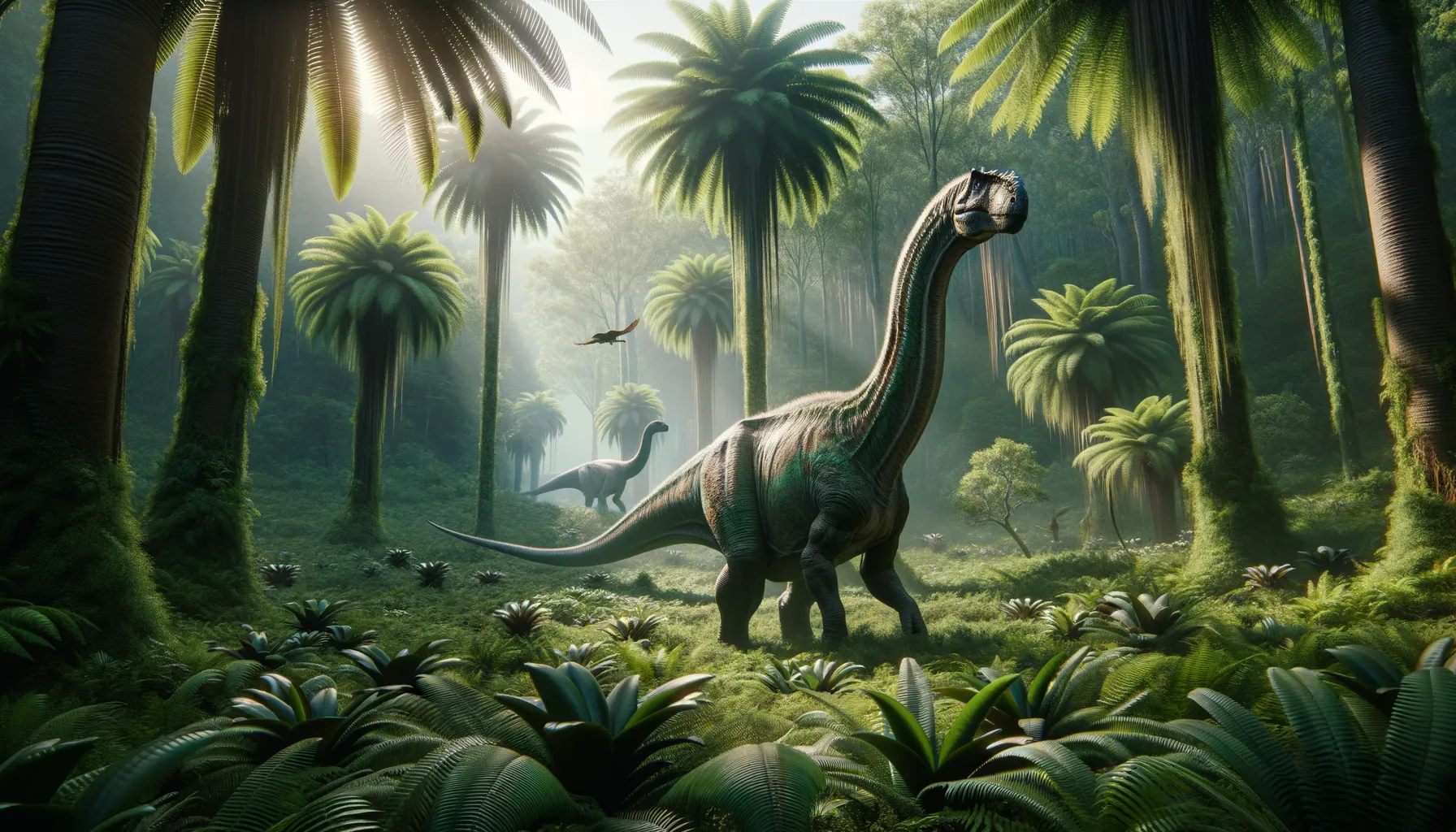
Xinjiangtitan
Graceful giant of the Jurassic steppes.
Period
Jurassic
Length
About 30 meters in length.
Height
Approximately 12 meters tall.
Weight
Estimated around 40 tons.
Xinjiangtitan was a massive herbivorous dinosaur known for its incredible length which rivaled that of some of the largest known dinosaurs. This sauropod lived during the Jurassic period and is notable for its exceptionally long neck, allowing it to feed on high vegetation. Its discovery in China has provided insight into the distribution and evolution of sauropods during this era.
Diet
Xinjiangtitan was a herbivore, feeding primarily on plant materials. Its long neck allowed it to reach high vegetation that other herbivores couldn't access, giving it a distinct advantage in gathering food.
Hunting
As a herbivore, Xinjiangtitan did not hunt. It relied on foraging for plants and had to be constantly on the move to find sufficient food to support its massive body.
Environmental challenges
Living in a prehistoric landscape with fluctuating climates, Xinjiangtitan faced challenges such as finding water sources during dry spells. Additionally, it needed vast amounts of plant life to sustain its size, making it vulnerable to changes in vegetation density. Predator avoidance would also have been crucial, although its size might have deterred many predators.
Speed
Xinjiangtitan was likely slow due to its size.
Lifespan
Estimated to be around 70 to 100 years.
First discovery
Discovered in Xinjiang, China in 2011.
Fun Facts
- Xinjiangtitan is one of the longest dinosaurs, with estimates suggesting it reached up to 98 feet (30 meters) in length.
- This giant dinosaur lived during the Jurassic period, around 160 million years ago.
- Xinjiangtitan's fossils were first discovered in the Shishugou Formation in the Xinjiang region of China.
- Its name, Xinjiangtitan, translates to 'giant from Xinjiang', highlighting both its size and the location where it was found.
- The long neck of Xinjiangtitan helped it reach vegetation without moving too much, making it an efficient eater.
- Belonging to the group of sauropods, Xinjiangtitan shares a distant relation with other giants like Brachiosaurus.
- Due to its massive size, Xinjiangtitan likely needed to consume large quantities of plants daily to sustain itself.
Growth and Development
Xinjiangtitan likely had a long growth period, possibly taking several decades to reach full size. Like other large dinosaurs, it may have experienced a rapid growth spurt in its juvenile years. This growth strategy would help it quickly reach a size that reduced predation risk.
Habitat
It inhabited areas that were rich in vegetation, likely preferring open forests and plains. The landscape would have provided both the necessary dietary resources and space for these giants to traverse. Seasonal changes could have driven migratory patterns to track food availability.
Interaction with other species
Xinjiangtitan coexisted with other dinosaurs, both herbivores and potential predators, in its ecosystem. It likely traveled in groups for protection and resource sharing. While it had little to fear from most carnivores due to its size, it might have competed with other large herbivores for food resources.
Natural lifespan
With minimal predation threats, it could live up to 100 years.
Reproduction
Like other sauropods, Xinjiangtitan likely laid eggs, which were carefully hidden or defended. Parental care may have been limited, with hatchlings needing to fend for themselves soon after birth. Its reproductive strategy would have been focused on producing a large number of offspring to ensure survival of some.
Social behaviour
Xinjiangtitan may have traveled in herds, a behavior aiding in protection and social interaction. This could have provided safety in numbers from predators. The herd structure would facilitate social bonding and communication among individuals.
Fossil locations
Fossils of Xinjiangtitan have primarily been found in the Xinjiang region of China. These discoveries have been crucial in understanding the distribution of sauropods in Asia during the Jurassic period. The location of these finds provides insights into the ancient ecosystems that supported such massive creatures.
